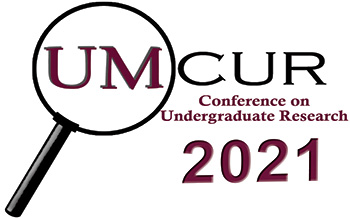Project Type
Presentation
Faculty Mentor’s Full Name
Chad Bishop
Faculty Mentor’s Department
Wildlife Biology
Abstract / Artist's Statement
Since the beginning of the last decade, the Blackfeet Reservation has experienced intense habitat fragmentation in the northern regions of the reservation, particularly in prime elk habitat that is believed to be along a migration corridor. One source of fragmentation has been the erection of a semi-permeable fence associated with a large bison ranch. The purpose of my study was to preliminarily assess potential interactions of elk (Cervus canadensis) and the semi-permeable bison fence as a precursor for further study. I worked in collaboration with the Blackfeet Fish and Game Department and the University of Montana, who will be initiating a larger elk migration study in the coming year. I deployed a small network of six trail cameras along the six-foot, woven bison fence on an adjacent landowner’s property and eastern most side of the bison ranch for a total of two months (January to March). Using information from the landowner, four locations were identified that were believed to be crossing points or pinch points, i.e. corners where elk may be trapped during a predator encounter. Of the four locations, three of them were nearby water sources, including a pond and two small creeks, while the fourth location was in a native rangeland habitat. At two of the sites, one camera was deployed looking directly at the fence and the secondary camera was placed farther back to examine the approach and a different angle of potential interactions. Based on an initial analysis of trail camera images, there were no recorded interactions between elk and the fence: however, there was an observed interaction between the fence and a white-tailed deer (Odocoileus virginianus) and a large number of coyotes (Canis latrans). Elk frequently move in large groups and are not evenly distributed across a landscape. My findings suggest a larger camera array than initially anticipated will be needed to adequately assess elk-fence interactions.
Category
Life Sciences
Analyzing Interactions among Migratory Elk and Semi-permeable Fences on the Blackfeet Reservation
Since the beginning of the last decade, the Blackfeet Reservation has experienced intense habitat fragmentation in the northern regions of the reservation, particularly in prime elk habitat that is believed to be along a migration corridor. One source of fragmentation has been the erection of a semi-permeable fence associated with a large bison ranch. The purpose of my study was to preliminarily assess potential interactions of elk (Cervus canadensis) and the semi-permeable bison fence as a precursor for further study. I worked in collaboration with the Blackfeet Fish and Game Department and the University of Montana, who will be initiating a larger elk migration study in the coming year. I deployed a small network of six trail cameras along the six-foot, woven bison fence on an adjacent landowner’s property and eastern most side of the bison ranch for a total of two months (January to March). Using information from the landowner, four locations were identified that were believed to be crossing points or pinch points, i.e. corners where elk may be trapped during a predator encounter. Of the four locations, three of them were nearby water sources, including a pond and two small creeks, while the fourth location was in a native rangeland habitat. At two of the sites, one camera was deployed looking directly at the fence and the secondary camera was placed farther back to examine the approach and a different angle of potential interactions. Based on an initial analysis of trail camera images, there were no recorded interactions between elk and the fence: however, there was an observed interaction between the fence and a white-tailed deer (Odocoileus virginianus) and a large number of coyotes (Canis latrans). Elk frequently move in large groups and are not evenly distributed across a landscape. My findings suggest a larger camera array than initially anticipated will be needed to adequately assess elk-fence interactions.
